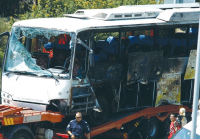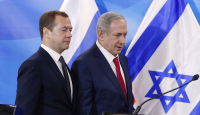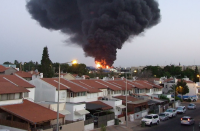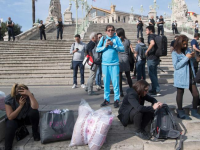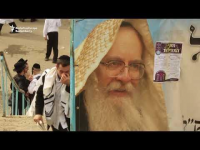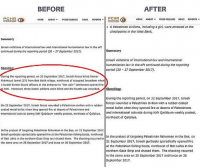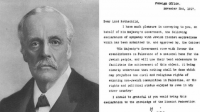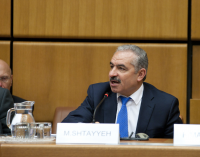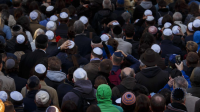
Links
Sheba Medical Centre
Melanie Phillips
Shariah Finance Watch
Australian Islamist Monitor - MultiFaith
West Australian Friends of Israel
Why Israel is at war
Lozowick Blog
NeoZionoid The NeoZionoiZeoN blog
Blank pages of the age
Silent Runnings
Jewish Issues watchdog
Discover more about Israel advocacy
Zionists the creation of Israel
Dissecting the Left
Paula says
Perspectives on Israel - Zionists
Zionism & Israel Information Center
Zionism educational seminars
Christian dhimmitude
Forum on Mideast
Israel Blog - documents terror war against Israelis
Zionism on the web
RECOMMENDED: newsback News discussion community
RSS Feed software from CarP
International law, Arab-Israeli conflict
Think-Israel
The Big Lies
Shmloozing with terrorists
IDF ON YOUTUBE
Israel's contributions to the world
MEMRI
Mark Durie Blog
The latest good news from Israel...new inventions, cures, advances.
support defenders of Israel
The Gaza War 2014
The 2014 Gaza Conflict Factual and Legal Aspects
To get maximum benefit from the ICJS website Register now. Select the topics which interest you.
Hamas’s forever war against Israel has a glitch, and it isn’t Iron Dome
Why Hamas promises another war soon, and another and another. And why it won’t work

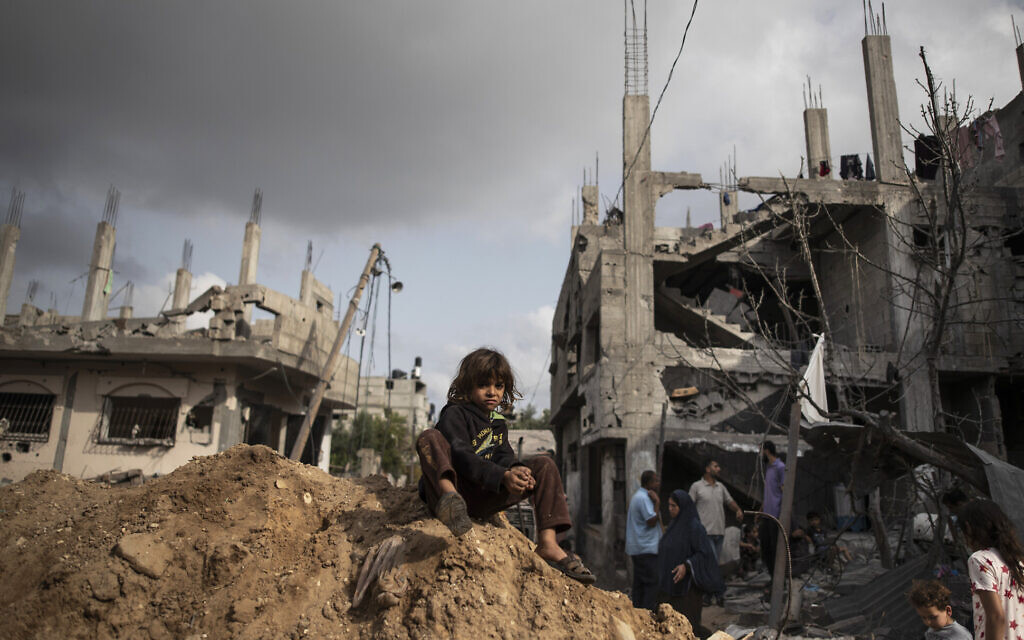
Palestinians inspect the damage to their homes following a ceasefire between Gaza's Hamas rulers and Israel, in Beit Hanoun in the northern Gaza Strip, Friday, May 21, 2021. (AP Photo/Khalil Hamra)
Hamas just concluded eleven long and painful days of war that inflicted on it enormous damage.
Many have noted how it successfully used its surprise May 10 rocket bombardment of Israeli cities to position itself as the undisputed leader of the Palestinian cause in place of decrepit old Fatah.
But that achievement was attained in the first day or two of fighting. Ten more days of sustained Israeli bombardment later, the terror group now faces the military version of a painful hangover.
Hamas was just forced to spend 11 days watching as Israel systematically disrupted its tactical innovations and demolished hundreds of millions of dollars’ worth of its military infrastructure. The group has spent a decade building major new warfighting capabilities meant to challenge Israel on new and unexpected fronts. All proved ineffective or outright useless.
 In this May 19, 2021, file photo, an Israeli artillery unit fires shells towards targets in Gaza. (AP Photo/Tsafrir Abayov, File)
In this May 19, 2021, file photo, an Israeli artillery unit fires shells towards targets in Gaza. (AP Photo/Tsafrir Abayov, File)
A crack naval commando force equipped with miniature submarines failed to produce a single significant attack and saw much of its infrastructure and equipment blown up from the air. The fast-moving anti-tank missile crews tasked with photogenically destroying Israeli military vehicles were identified and destroyed so quickly in the early days of the fighting that Hamas ordered them withdrawn from the battlefield. Strike drones able to precisely target Israeli installations were intercepted with despairing efficiency. And a sprawling underground tunnel and bunker system dubbed “the Metro” that offered Hamas fighters the ability to quickly maneuver across the urban battlefields of Gaza without exposing themselves to Israeli airstrikes only ended up providing Israel with cleaner military targets.
Israel showed it had deeply penetrated the Hamas ranks, targeting a long list of mid-level commanders and then publicizing the list. The names were unknown to Israelis and drew some skeptical eyebrow-raising from military analysts. But few in Hamas missed the message: Hamas’s ranks are perforated with Israeli intelligence assets. No one is safe.
And finally, there’s the death toll. Putting aside any debate about either side’s morals for a moment, purely on tactical grounds, the IDF prefers a low death toll on both sides: on the Palestinian side to keep the political window open for continued airstrikes, and on the Israeli side to avoid a narrative that it had failed in its primary duty to protect Israelis. Hamas needs higher death tolls — again, sticking to tactical considerations only — on the Palestinian side to hasten international pressure to close the Israeli attack window and on the Israeli side to show, in the grim logic of such confrontations, that it had inflicted some measure of pain on the other side in a war it had started.
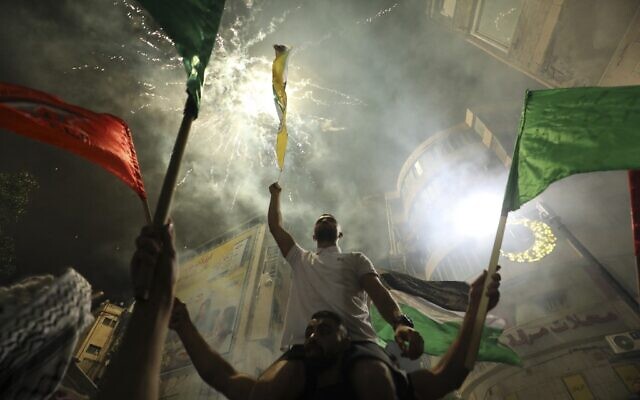
Palestinians celebrate in Ramallah’s city center in support of Gaza, after a ceasefire is announced between Hamas and Israel late in the early hours of May 21, 2021. (Abbas Momani/AFP)
The IDF emerged the clear winner in that contest. Hamas managed just 12 Israeli dead at the cost of thousands of toppled buildings in Gaza and massive damage to its expensive infrastructure. The total Palestinian death toll after thousands of Israeli strikes, according to Hamas’s own reckoning and including both fighters and civilians, was 232. That math offers no comfort to the families of civilians killed in the Israeli strikes, of course, but in its cold, simple numbers it nonetheless reveals a level of surgical precision that may well be unprecedented in the annals of modern warfare.
‘Where did Israel go?’
Of course, none of that got in the way of Hamas declaring and celebrating its “victory” on Friday, using the term in the way pioneered by Hezbollah in 2006 that sees the mere fact of surviving a firefight with Israel, irrespective of the damage wrought to one’s country or the lack of damage inflicted on the enemy, as a “victory.”
Yet that strange standard for “victory” is not as ridiculous as it sounds. It flows from Hamas’s strategic vision, which was not dented by the tactical failures of the past 11 days.
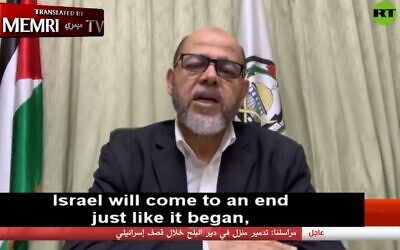
Screen capture of Musa Abu Marzouk, deputy political chief of Hamas, in a May 17, 2021, interview with Russia Today TV, translated by the Washington-based MEMRI institute. (MEMRI screen capture)
One doesn’t have to search very hard to uncover that vision. Hamas talks about it constantly.
On Monday, Hamas deputy political chief Musa Abu Marzouk gave an interview to Russia Today in which he clarified what Hamas believed the war was about.
The current war, he said, “is not the final war” with Israel. There will be more.
“It’s not like it was in Vietnam and elsewhere, where things ended up with negotiations. This is just one of a [series] of wars, and a war will come when we negotiate with them [i.e., the Jews] about the end of their occupation and their leaving of Palestine,” Abu Marzouk said, according to a translation by MEMRI.
There would be no compromises allowing Israel to continue existing or the Jews to remain in the land, he assured. “Israel will come to an end just like it began, and our Palestinian people will return to their homes because injustice cannot last and people must get what is rightly theirs.”
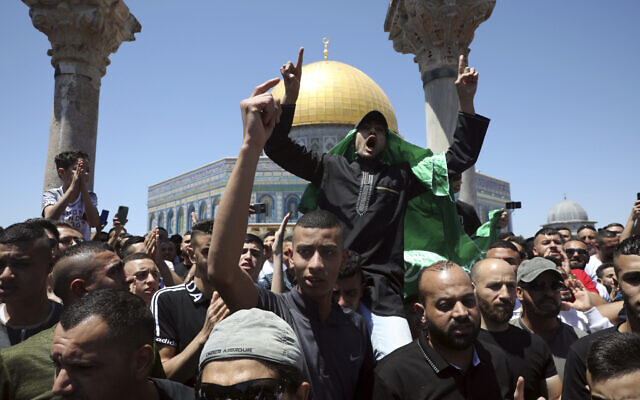
A Muslim worshipper wears a Hamas flag during a protest following Friday prayers at the Dome of the Rock on the Temple Mount in the Old City of Jerusalem, May 14, 2021. (AP Photo/Mahmoud Illean)
That end, he insisted, was no fantasy: “We are no dreamers. Until recently, they mocked Hamas’s rockets and called them children’s toys. I do not believe anyone is saying this today. Until recently, the whole world supported the white government in South Africa, but things have changed. Where did the Soviet Union go? Where did the Berlin Wall go? The day will come when people ask: ‘Where did Israel go?'”
The interview is one of countless expressions of what amounts to Hamas’s most fundamental belief about its enemy: that the Jews of Israel are an illegitimate usurper polity, the last vestige of European colonialism, and therefore doomed to failure like all other European colonial projects from the last century. Israel in Hamas’s telling is not a people competing with the Palestinians for a single uncomfortably narrow strip of land. It is, like the Soviet Union, East Germany, or the South African apartheid regime before it, a thin patina of political institutions and concepts that will burn away in the harsh light of sustained resistance.
It may take a great many painful sacrifices to get there, of course. French Algeria was sent packing only after eight years of bitter war and hundreds of thousands killed during the Algerian independence war. America was chased out of Vietnam only after 20 years of fighting and hundreds of thousands killed.
But in the end, with a few more years of patient and painful sacrifice, and, crucially, an abiding refusal to compromise, the Jews will leave.
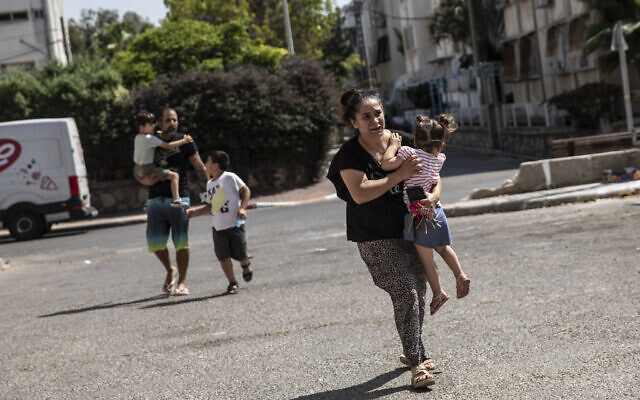 Lia Tal, 40, rushes with her children and partner to take shelter as a siren sounds a warning of incoming rockets fired from the Gaza Strip, in Ashdod, Israel, Thursday, May 20, 2021. (AP Photo/Heidi Levine)
Lia Tal, 40, rushes with her children and partner to take shelter as a siren sounds a warning of incoming rockets fired from the Gaza Strip, in Ashdod, Israel, Thursday, May 20, 2021. (AP Photo/Heidi Levine)
In Hamas’s vision, the pain endured by Gazans over the past 11 days was a worthwhile price to pay for the great boon of sidelining accommodationist Fatah in the West Bank and reunifying the Palestinian ranks around that anti-colonial struggle.
The big question
As Hamas comes to dominate the Palestinian national movement, the question that overshadows all others, the question with the power to determine the Palestinian future, and by extension the Israeli one too, is a simple one: Is Hamas’s grand strategy correct? Will it work?
The Palestinians believe Israeli Jews are dead-set on sweeping them out of the land. Polls in recent years found not only that most Palestinians believe Israel plans to demolish the Al-Aqsa Mosque on Jerusalem’s Temple Mount, the cornerstone of Palestinian identity and religion, but about half of Palestinians believe Israel may succeed in doing so. The belief in Israel’s malign designs on Al-Aqsa is no mere conspiracy theory. It’s an expression of vulnerability, of the sense among many Palestinians that they could not stop Israel from destroying Al-Aqsa if it chose to.
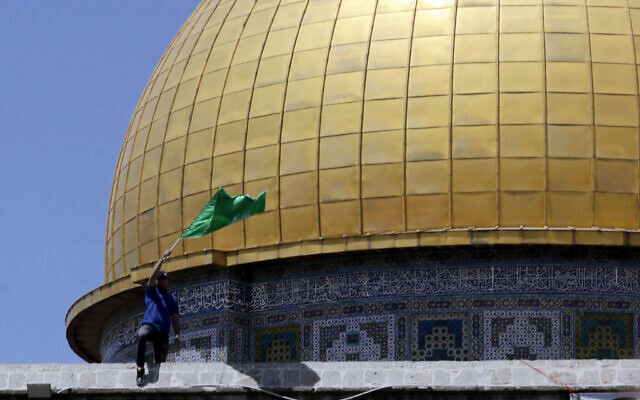 A man waves the Hamas flag during a protest at the Dome of the Rock shrine on the Temple Mount in the Old City of Jerusalem, Friday, May 7, 2021. (AP Photo/Mahmoud Illean)
A man waves the Hamas flag during a protest at the Dome of the Rock shrine on the Temple Mount in the Old City of Jerusalem, Friday, May 7, 2021. (AP Photo/Mahmoud Illean)
Most Israeli Jews, meanwhile, are convinced Palestinian violence is not ultimately a protest at their misbehavior or at unjust policies, but is rooted in the ideology described so clearly by Abu Marzouk: Incessant and remorseless violence until the Jews all flee from the country or are killed.
Israelis believe that partly because the major Palestinian factions routinely say it. But they also believe it because they experienced it. The world may have forgotten the Second Intifada that began in 2000, in which relentless waves of well over 100 suicide bombings detonated in Israel’s cities and left the Oslo-supporting left shattered and marginalized for a generation and counting. Israelis have not.
That wave of shocking, sustained violence began not three decades into a failed peace process, but in 2000, scarcely eight years into what most observers believed was a successful effort to that point. Israeli troops had left Palestinian cities starting in the mid-1990s, the Palestinian Authority was established, and Israeli, Palestinian and American leaders were in Camp David negotiating — so Israelis were told at the time — the final boundaries of the two-state solution. It was then that a paroxysm of violence and brutality suddenly swept over Palestinian society and dashed the hopes of a generation.
The point here is not that the Second Intifada is unexplainable. There are many explanations, such as the argument heard from some Palestinians over the years that the violence began as a grassroots rebellion against Yasser Arafat’s tyranny and was diverted by his frightened, teetering regime into an assault on Israel. The point here is only to say that the Israeli experience of those terror waves did not see them as an attack on the occupation, but as an attack on an Israel trying to dismantle the occupation.
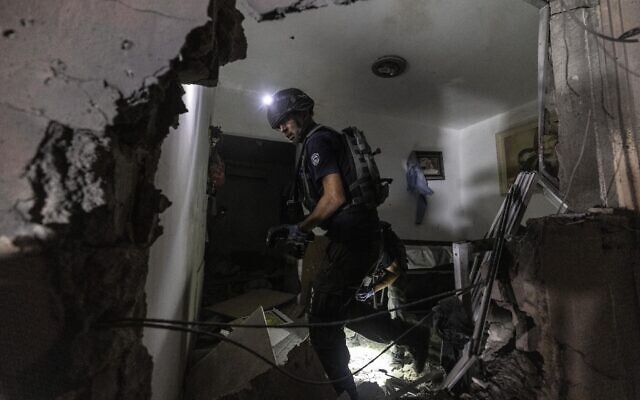 An Israeli bomb squad officer inspects a house damaged by a rocket fired from the Gaza Strip, in Sderot, May 19, 2021. (AP Photo/Tsafrir Abayov)
An Israeli bomb squad officer inspects a house damaged by a rocket fired from the Gaza Strip, in Sderot, May 19, 2021. (AP Photo/Tsafrir Abayov)
Israeli Jews do not feel as vulnerable as Palestinians; they do not believe the other side is likely to succeed. But the belief that Palestinians are trying to remove them drives the corollary belief that Palestinian violence is ultimately not an argument against Israeli policies, but against Israelis’ existence. Palestinian terrorism, this mainstream Israeli view holds, is not unthinking and reactive. It is planned and purposeful, rooted in the strategy described by Abu Marzouk, a strategy that interprets any Israeli compromise or accommodation as evidence of weakness.
‘How do we expel the Jews?’
In the mid-1990s, two IDF major generals were coming to the end of their long and storied military careers. Meir Dagan had led everything from commando squads to armored brigades and would later go on to serve as director of the Mossad. Yossi Ben Hanan, after serving as one of Israel’s most successful tank commanders in the 1973 war, would go on to lead the armored corps and the IDF’s R&D arm — though he is most famous for the 1967 Life magazine cover photo of his 22-year-old self standing in the waters of the Suez Canal, a symbol of Israeli vitality and military success.
 The Life Magazine cover from June 23, 1967 showing IDF officer Yossi Ben Hanan, 22, in the waters of the Suez Canal.
The Life Magazine cover from June 23, 1967 showing IDF officer Yossi Ben Hanan, 22, in the waters of the Suez Canal.
By the mid-1990s, the two grizzled veterans, newly released from their military duties, planned to travel together to Vietnam. Both were avid students of military history, including of the Vietnam conflict. They applied for visas and made a special request to the Vietnamese authorities: to meet General Vo Nguyen Giap.
Giap was one of the great strategic minds of the twentieth century, a former schoolteacher who played a central role in developing the strategic thinking and organizational capabilities that transformed ragtag rural provincials into a military force that would rout the most powerful nations in the world, from the Japanese occupation to the French and the Americans over three long decades of conflict culminating in the end of the Vietnam War in 1975.
Giap was also a ruthless and often tyrannical leader, murdering opponents of Vietnam’s communist movement and overseeing a guerrilla war that sacrificed hundreds of thousands of his own fighters to the cause. He was no hero to the Israelis, but he nevertheless cut a fascinating figure in the annals of modern warfare.
 Vietnamese General Vo Nguyen Giap, in a portrait by Japanese war correspondents in 1973, in the midst of the Vietnam War. (Courtesy, website of Vietnam’s Quảng Bình Province)
Vietnamese General Vo Nguyen Giap, in a portrait by Japanese war correspondents in 1973, in the midst of the Vietnam War. (Courtesy, website of Vietnam’s Quảng Bình Province)
Unexpectedly, the request was approved. Giap agreed to meet them. When the Israelis arrived in Vietnam, they sat down with the man who by then had spent decades as his country’s defense minister. It was a long meeting, as Ben Hanan would later recall to Eran Lerman, a former top-ranked IDF intelligence officer and later deputy national security adviser. Lerman, now at the Jerusalem Institute for Strategy and Security, told the story to this writer.
When the Israelis rose to leave, Giap suddenly turned to the Palestinian issue. “Listen,” he said, “the Palestinians are always coming here and saying to me, ‘You expelled the French and the Americans. How do we expel the Jews?’”
The generals were intrigued. “And what do you tell them?”
“I tell them,” Giap replied, “that the French went back to France and the Americans to America. But the Jews have nowhere to go. You will not expel them.”
The war abroad and the war at home
It’s no accident that Giap’s final observation stuck so vividly in Ben Hanan’s mind, or in Lerman’s.
There is a profound tragedy here for the Palestinian cause. Even as it gains overseas support at levels unseen since the 1970s, those supporters, largely ignorant of the strategic discourse within the Palestinian national movement, have spent the past 11 days lining up squarely behind the very party that has driven the Palestinian cause into a brick wall.
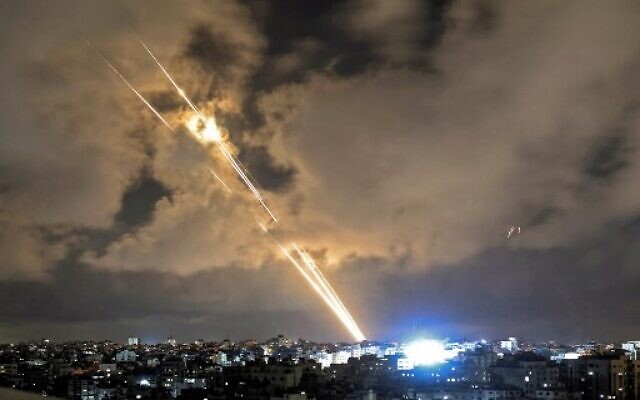 Rockets are launched towards Israel from Gaza City on May 20, 2021. (Mahmud Hams/AFP)
Rockets are launched towards Israel from Gaza City on May 20, 2021. (Mahmud Hams/AFP)
Each side in this conflict believes the other is engaged in an eliminationist war. That renders both all but immune to foreign pressure. Palestinian behavior didn’t change when the Trump administration cut desperately needed US aid. Will Israeli behavior change if progressive lawmakers like Sen. Bernie Sanders halt the sale of missiles to Israel? If Sanders’s condition for the sale is that Israel not strike at Hamas in the future, even as the terror group barrages Israel’s cities, would Israel agree to sit idle in the next war, or will it find alternative sources for its missile supply?
Hamas celebrated on Friday its ability to send Israelis scurrying to bomb shelters. A colonialist tyrant, after all, survives by projecting an aura of strength. Hamas believes its job is to puncture holes, ceaselessly and mercilessly, in that self-assurance.
But Israeli Jews do not see themselves as an artificial colonialist entity doomed to fall. They believe they are a people with nowhere to go and facing an unappeasable foe. Just as Palestinians are unified and mobilized by Israeli pressure, so Israeli Jews are unified and mobilized by Palestinian pressure. A sense of vulnerability and unjust victimization may be a liability to a colonialist enterprise, but to a wartime population that believes it is defending its home, it is a strategic boon, a gift that Hamas continually confers on Israeli morale.
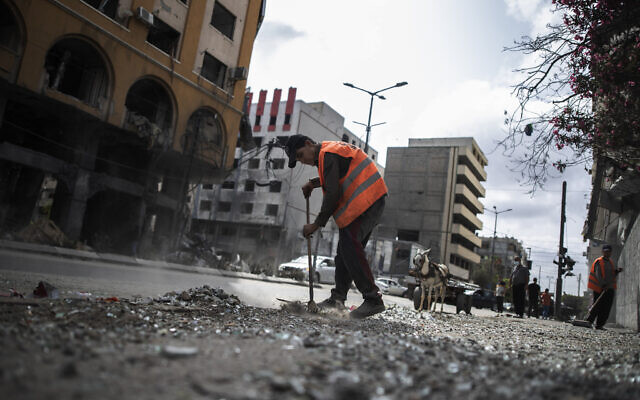 Palestinian municipal workers clean the streets following a ceasefire reached after an 11-day war between Gaza’s Hamas rulers and Israel, in Gaza City, May 21, 2021. (AP Photo/Khalil Hamra)
Palestinian municipal workers clean the streets following a ceasefire reached after an 11-day war between Gaza’s Hamas rulers and Israel, in Gaza City, May 21, 2021. (AP Photo/Khalil Hamra)
And that’s the tragedy in a nutshell. The Palestinians have two basic strategies: relentless anti-colonial-style violence on the one hand and international diplomatic and economic pressure on Israel on the other. It has not yet dawned on Palestinians, nor on the foreign supporters eager to carry their banner, that the two strategies cancel each other out, that Hamas is constantly clarifying to Israelis the dire consequences of their acquiescence to international demands.
A Palestinian polity increasingly dominated by Hamas now appears set to go down that self-defeating rabbit hole for a good few years. As both sides begin preparations for the next war promised by Abu Marzouk, the safe money, as always, is on the pessimists. Things are going to get a lot worse before they start getting better.
# reads: 4736
Original piece is https://www.timesofisrael.com/hamass-forever-war-against-israel-has-a-glitch-and-it-isnt-iron-dome/



